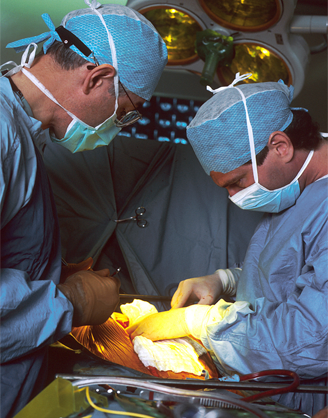Quarter of Breast Conservation Patients Require Repeat Surgery
Data from a large study found that about 25% of women who underwent breast conservation surgery for stage 0-II breast cancer had a repeat surgical intervention.
A quarter of women who underwent breast conservation surgery for stage 0-II breast cancer had a repeat surgical intervention.

Data from a large study indicated that about 25% of women who underwent initial breast conservation surgery to treat stage 0 to II breast cancer underwent a repeat surgical intervention, despite the fact that more than 92% of patients examined had a negative margin.
Lee G. Wilke, MD, of the department of surgery at the University of Wisconsin, and colleagues found that the rate of re-excision after initial breast conservation surgery varied greatly across the country and by patient, tumor, and facility.
In a commentary that accompanied the study in JAMA:Surgery, Julie Margenthaler, MD, of Washington University School of Medicine, St. Louis, Miss., and Aislinn Vaughan, MD, of Sisters of St. Mary’s Breast Care, St. Charles, Miss., wrote that these results show it is time for physicians to put biases aside.
“The Society of Surgical Oncology and the American Society for Radiation Oncology developed a consensus statement, supported by systematic review data, encouraging adoption of ‘no tumor on ink’ as the standard definition of a negative margin for invasive stage I and II breast cancer,” they wrote. “We have robust evidence that additional operations for close, but negative, margins do not result in better outcomes. However, additional operations increase health care costs, misuse of resources, patient anxiety, and delay in adjuvant therapy. With more than 200,000 new invasive breast cancers diagnosed each year, a staggering number of women are undergoing procedures that are unnecessary and simply wasteful.”
In the study, Wilke and colleagues attempted to identify what patient, tumor, or facility factors might influence repeat surgery. They examined data from 316,114 patients diagnosed with breast cancer between 2004 and 2010 identified via the National Cancer Data Base. Patients had stage 0 to II breast cancer and all underwent initial breast conservation surgery. No patients were treated neoadjuvantly or diagnosed by excisional biopsy.
Of the patients examined, 76.4% underwent single lumpectomy and 23.6% underwent at least one additional operation. Of those who had an additional procedure, 62.1% underwent complete lumpectomy and 37.9% underwent mastectomy. The researchers identified only a slight decrease in repeat surgery between 2004 and 2010 (25.4% vs 22.7%; P < .001).
The study indicated that repeat surgery was more common in patients aged 18 to 29 compared with patients aged older than 80 years (38.5% vs 16.5%; P < .001). Increasing tumor size was also linked with increasing rate of repeat surgery. Additionally, repeat surgeries occurred more frequently at facilities in the Northeast region compared with the Mountain region (26.5% vs 18.4%; P < .001). Finally, academic or research facilities also had higher rates of repeat surgeries compared with community facilities (26% vs 22.4%; P < .001).
“These findings can be used by surgeons to better inform their patients regarding repeat surgery rates and how patients or tumor characteristics influence these rates,” the researchers wrote. “More important, these data can be used to further support the vitally important adoption of guidelines regarding reexcision after initial breast conservation surgery.”